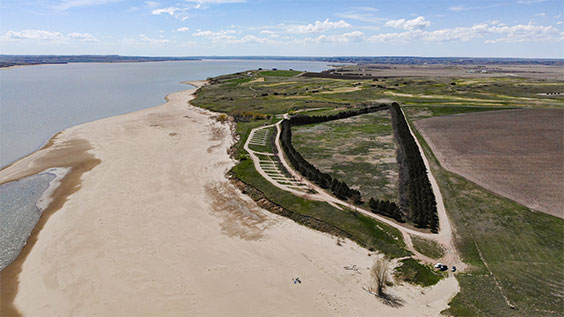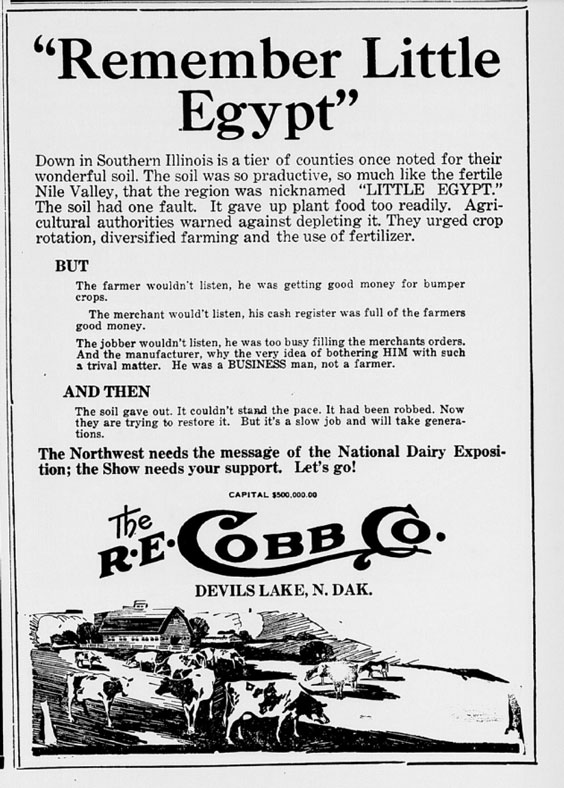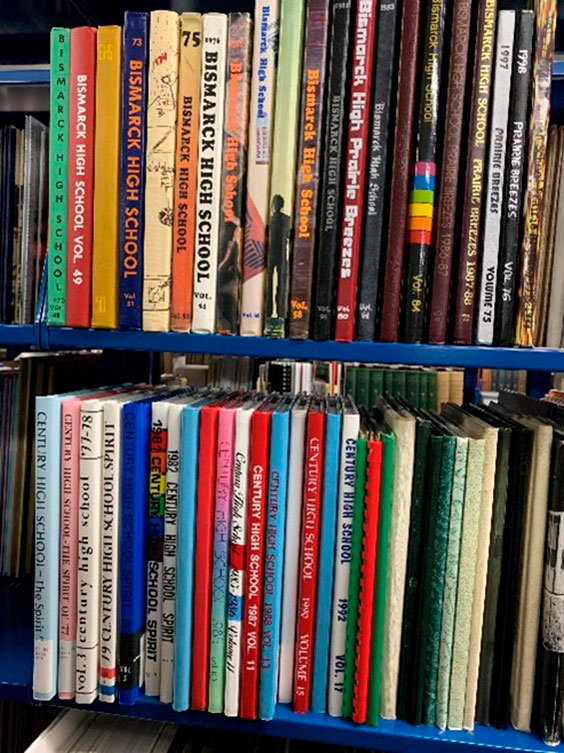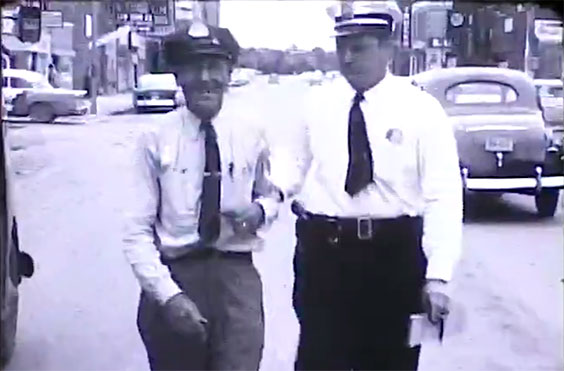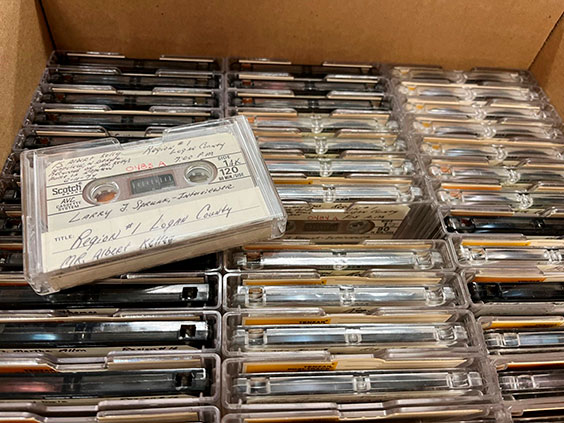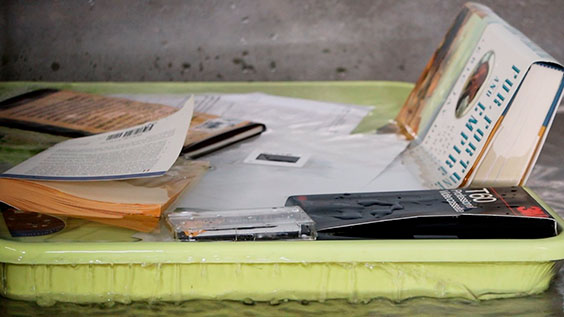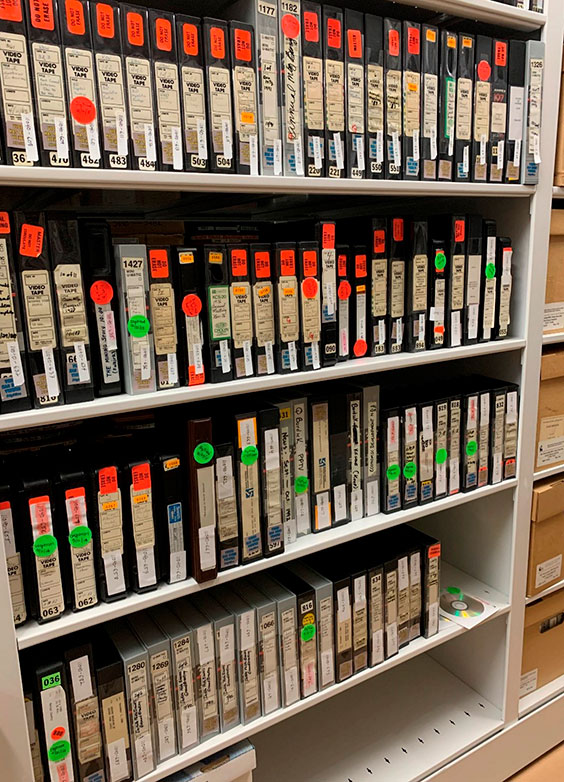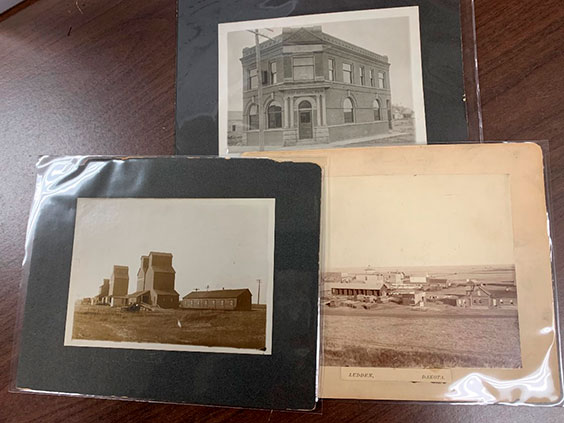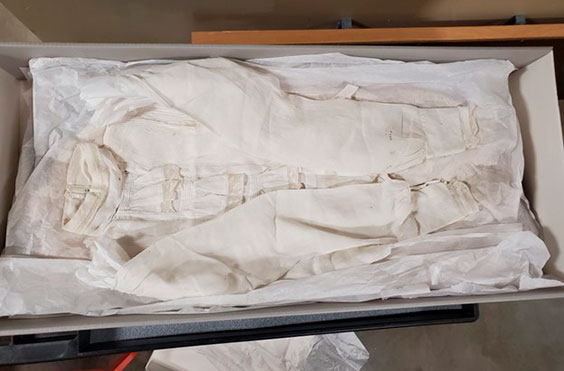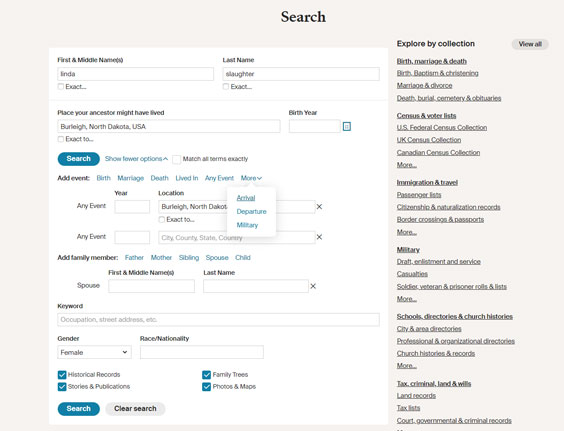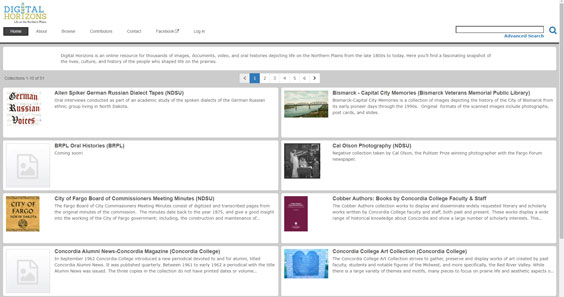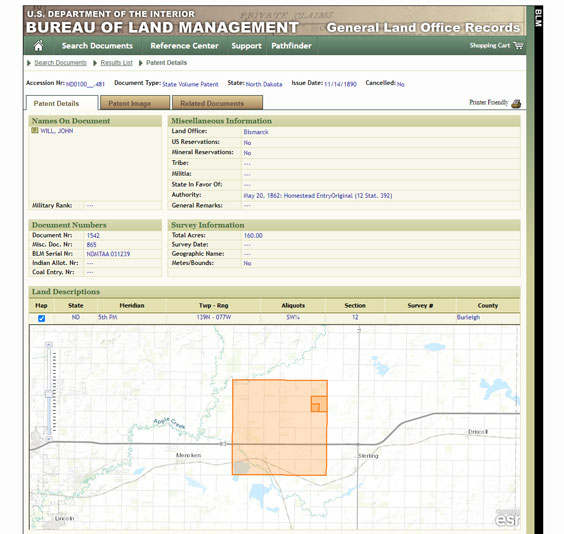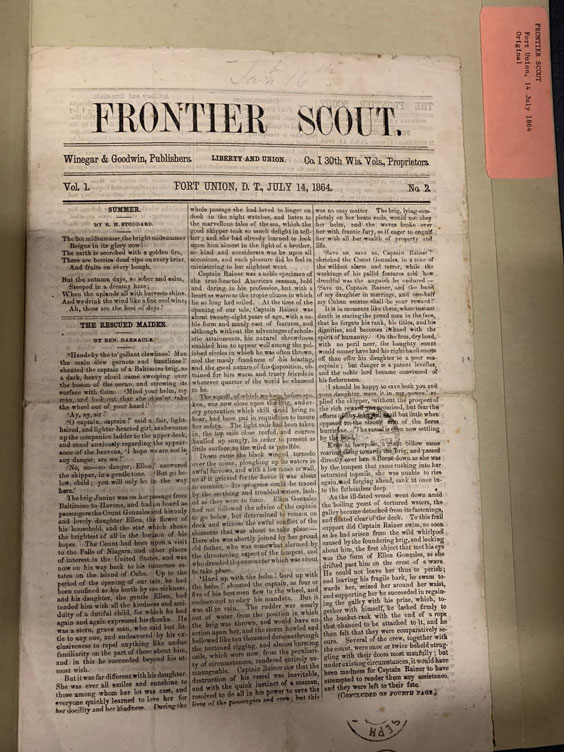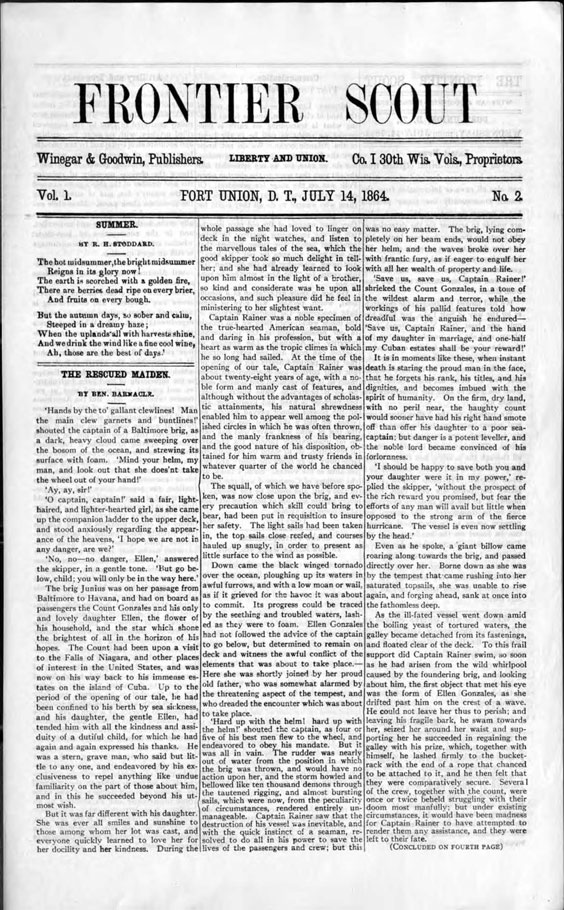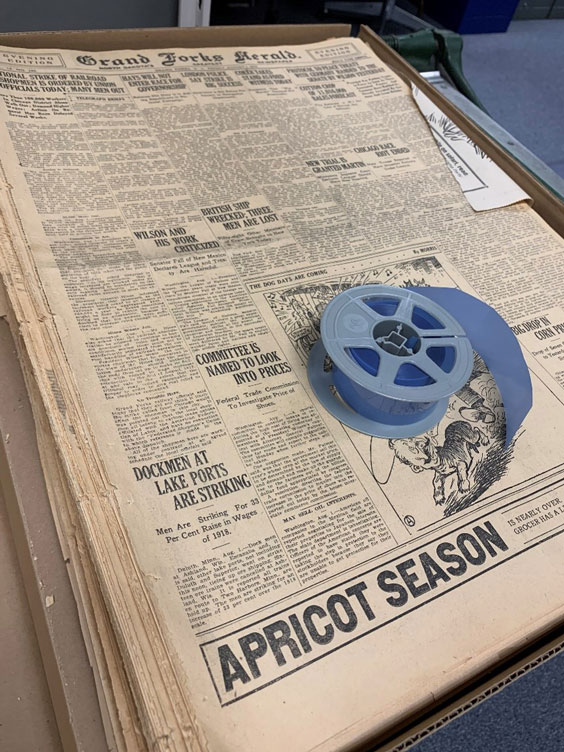A Few of Our Favorite Things: State Archives Staff Reflect on Best Part of the Job
This month, the State Archives marks American Archives Month by highlighting the memory keepers at work behind the scenes collecting, preserving, and sharing North Dakota’s documentary history. I asked some of our hardworking memory keepers—the amazing State Archives staff—what their favorite thing about being an archivist is and about the special moments that make this job worth doing. Check out their answers below!
Matt Ely, photo archivist
My favorite part of my job is working with obsolete photographic formats such as daguerreotypes, ambrotypes, and tintypes.
Daguerreotypes were the first commercially viable and publicly available style of photography and capture an image directly on a piece of metal, which is then housed in a case. Wet collodion direct positives, such as tintypes and ambrotypes, came next. These types of photography use the same process as daguerreotypes but capture images on a thin sheet of metal or a piece of glass respectively.
It’s very interesting to see how much photography has changed over the years, both in the process and the product. I think it’s great to work with historical photographs so closely, and it’s also neat that examples of these processes in our collections range from over 150 years ago to just a couple months old!
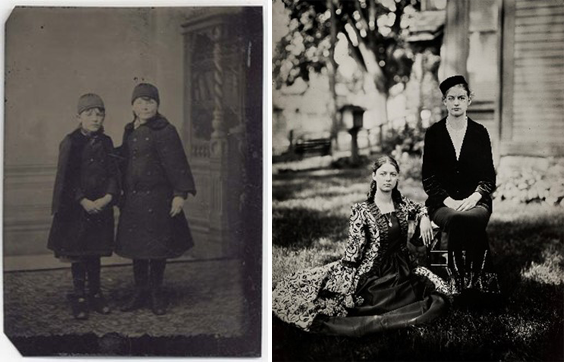
From left: An 1875 tintype of Ellen Malloy and Mollie Taggert next to one of Millie and Madeleine Hyatt at the Former Governors’ Mansion State Historic Site in Bismarck, created just this year by Kary Janousek from Fargo. SHSND SA 2010-P-025-00002, 2024-P-016-00013
Daniel Sauerwein, reference specialist
Working in reference allows me to use my research skills to assist people find records and answers to their questions. Helping them solve historical mysteries and leaving patrons better informed than when they entered is a great feeling. I especially enjoy aiding genealogy researchers and kids learn more about themselves and the history of North Dakota and its people. Working with the collections is also a wonderful part of being at the State Archives.
Megan Steele, local government records archivist
My favorite thing about being an archivist is browsing through the past. Seeing snapshots in time from someone else’s life can be an almost surreal realization. Second to that feeling is the joy and excitement I see when a volunteer or patron makes a connection or finds an interesting tidbit that they cannot wait to tell others about. I always encounter something fun or interesting when processing collections that makes me laugh or smile.
Sarah Walker, head of reference services
We take the term “memory keepers” quite seriously. The items held in our collections are direct collections and recollections of individuals who lived here, worked here, and loved here. We are keeping their memories alive for their family and friends and for future generations. How can you not get goosebumps thinking about that? What an honor to work in this field, at this agency, and help preserve the history of this state.
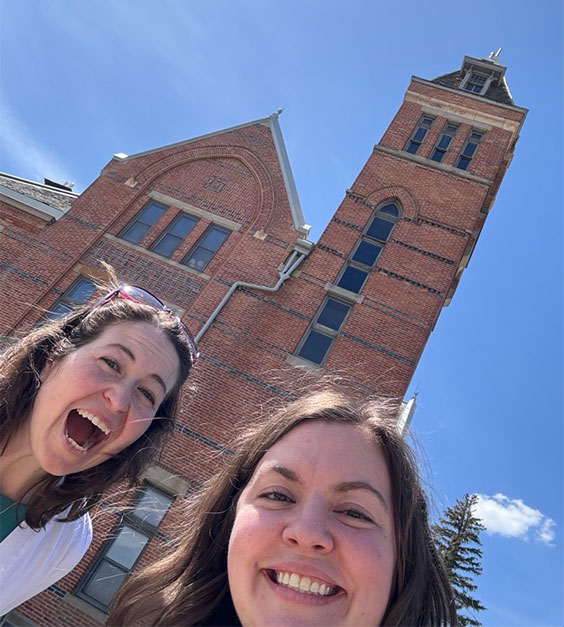
The author and coworker Lindsay Meidinger excited to capture oral histories for the State Archives’ collections while at the Stutsman County Courthouse State Historic Site in Jamestown, spring 2024.
Kylie Ward, newspaper archivist
As an archivist, my favorite part of the job is touching history. Our newspaper collection is extensive and having the opportunity to handle old papers from the late 1800s or early 1900s is always exciting. The pages are worn with age and detail the lives of countless North Dakotans who made an impact on their communities. From marriage announcements to crop harvests to the prices of products advertised—nearly every aspect of these historical newspapers is interesting to look through. One of my favorite finds is this cute dispatch from a dog show that ran in a 1950 edition of the Bowbells Tribune below.
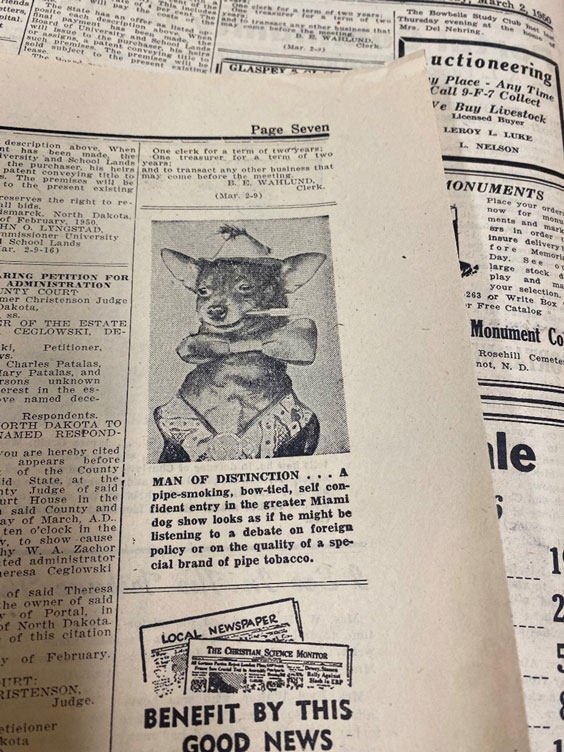
Bowbells Tribune, March 9, 1950, p. 7
Ashley Thronson, reference specialist
As for me, my favorite thing about being an archivist is helping researchers access the State Archives' collections. So much history can be found within our collections, but it can be a confusing experience if you don’t know where to start looking or what topics/events we have information on. Talking to people about their research and helping them search our website and the resources we have available to navigate our collections is my favorite part of the job. Not only am I answering their questions, I am also helping patrons learn about the State Archives’ resources and teaching them skills they can take with them on their research journey.


